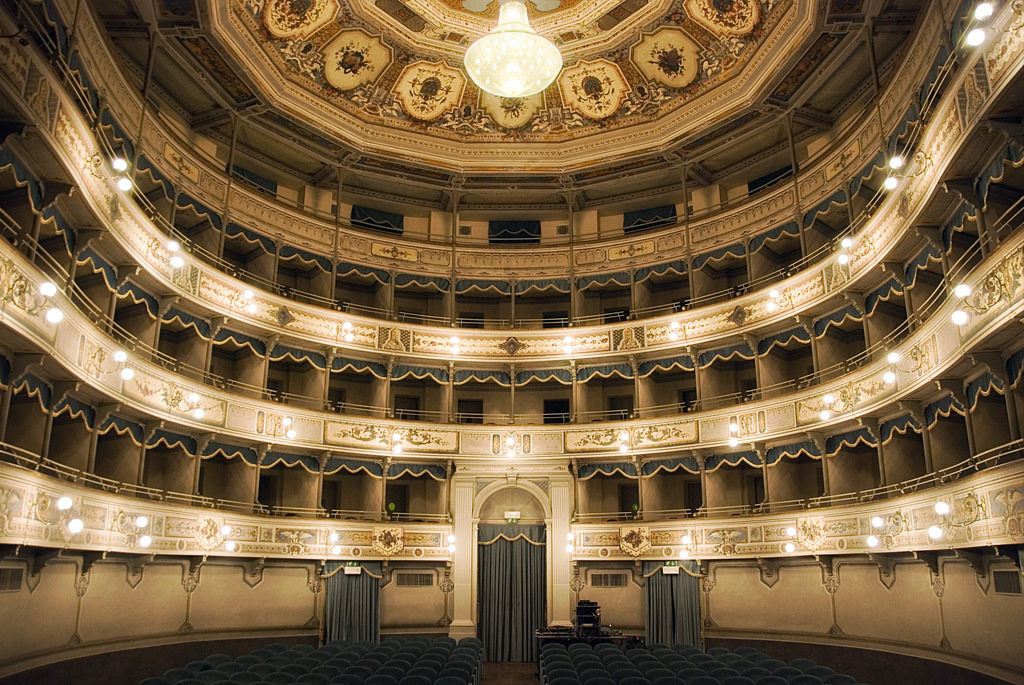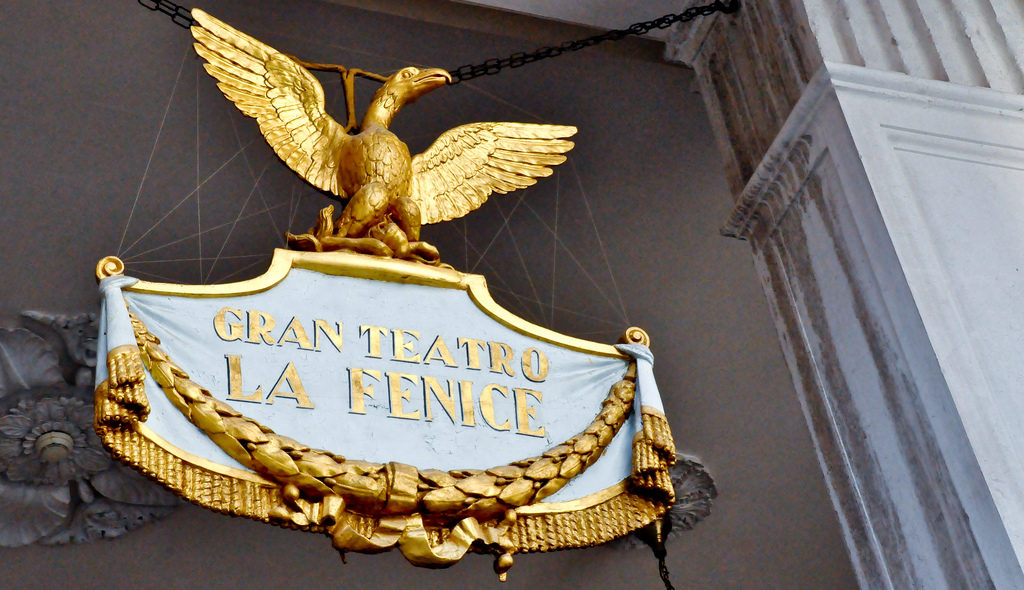Back in 1770 Venice was home to an astonishing seven theatres. In 1773 one of these, the San Benedetto, burned down. A decision was made to rebuild the theatre and to make the new building larger, more opulent and stylish than any which had previously existed in the city. The name given to the new theatre was La Fenice (the Phoenix). Out of a public competition around 30 designs were submitted and the winning entry was from Giannantonio Selva, his plans being for a more understated exterior, something which found favour with the citizens of Venice. Selva designed a theatre which, while having grand features, was also sympathetic to the other architecture in the city. Many theatres of the time were standalone, grand statements which were as much to present a statement of opulence as anything else. Selva created a building which had authority but was easily integrated in to its surroundings. Elsewhere in the city, another theatre (the Regio Ducale) had burned down in 1776 and the now world-famous La Scala was built on the site of that ruin.
La Fenice was inaugurated in May, 1792 with the opera I giochi di Agrigento by Giovanni Paisiello. Immediately, the theatre became recognised as one of the major European venues. In the 19th century the theatre was to become closely associated to the works of the famous composer Rossini (who was born in the year La Fenice first opened). In 1813, at the age of 21, Rossini’s first major work, Tancredi, was performed at the theatre and catapulted him (and the theatre) to international fame, people would sing arias from the work at public gatherings and his reputation was assured just three years later with the opening of the Barber of Seville.
Back in Venice, tragedy was to strike again when La Fenice was destroyed by another fire on a night in December, 1836. It was decided to rebuild the theatre immediately and the brothers Giovanni Battista and Tomaso Meduna were given the job of designing the new building. This time a more elegant and grandiose building was constructed and, amazingly, just one year and two weeks after the fire, the new building opened. This new building was to tally with the career of a new great in the world of composing. Born in 1813 (the year of Rossini’s Tancredi) Giuseppe Verdi was to become one of the great names of Italian opera. In 1842, La Fenice was home to his production of Nabucco and, over the next 15 years the theatre was to commission five more works from Verdi (including La Traviata and Rigoletto). Venice’s main opera house might have been La Scala but La Fenice became the place to see many of Verdi’s works including more experimental pieces.
La Fenice remained closed throughout World War I but was soon to become a major theatre in the post war years. The theatre became one of the main stages for the Venice Biennale and saw many of the great composers and performers appear there. In 1996 the theatre was, once again, destroyed by fire and this time the cause was arson. Reconstruction began in 2001 and in under two years a team of 200 craftsman succeeded in recreating the old theatre with a seating capacity of 1,000 (previously just over 800). La Fenice was rebuilt in the 19th-century style using still photographs from the opening scenes of the 1954 film Senso, which was filmed in the house, in order to obtain details of its design. It reopened on 14th December 2003 with an inaugural concert of Beethoven, Wagner, and Stravinsky. The first opera production, fittingly, was Verdi’s La Traviata in November 2004. Critical response to the rebuilt theatre was, unsurprisingly, mixed, with some believing it to be a fake imitation of the past. However, one thing remained true, the phoenix always found a way to rise from the ashes.
In Venice, memorable landmarks convey Italy’s vital role in world history. Check out our Venice, Florence and Cinque Terre educational tour.
(Editor’s note: Add Paul on Google+ If you have a question about for EF Tour Director Paul Mattesini, or an idea for a blog post topic, you can email Paul here, and he will answer readers’ questions in future blog posts.)
Related articles


